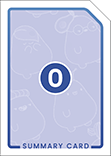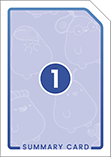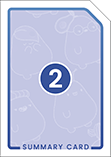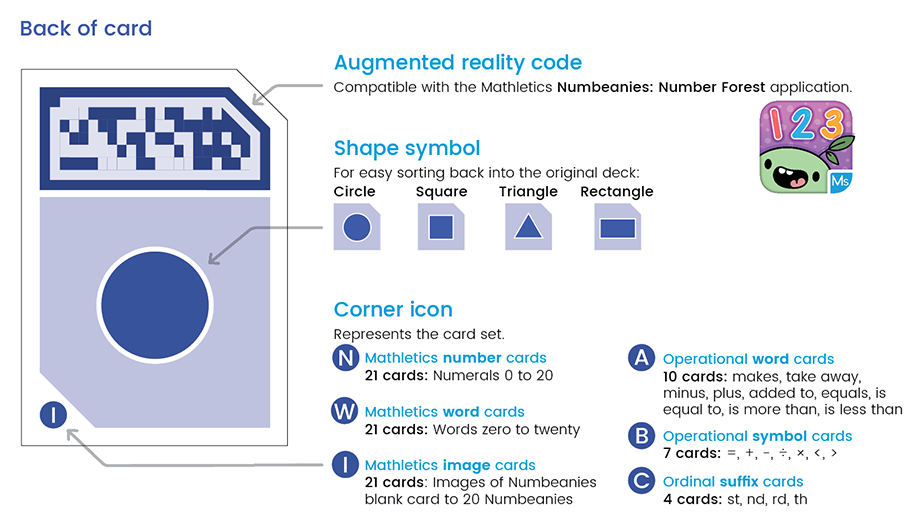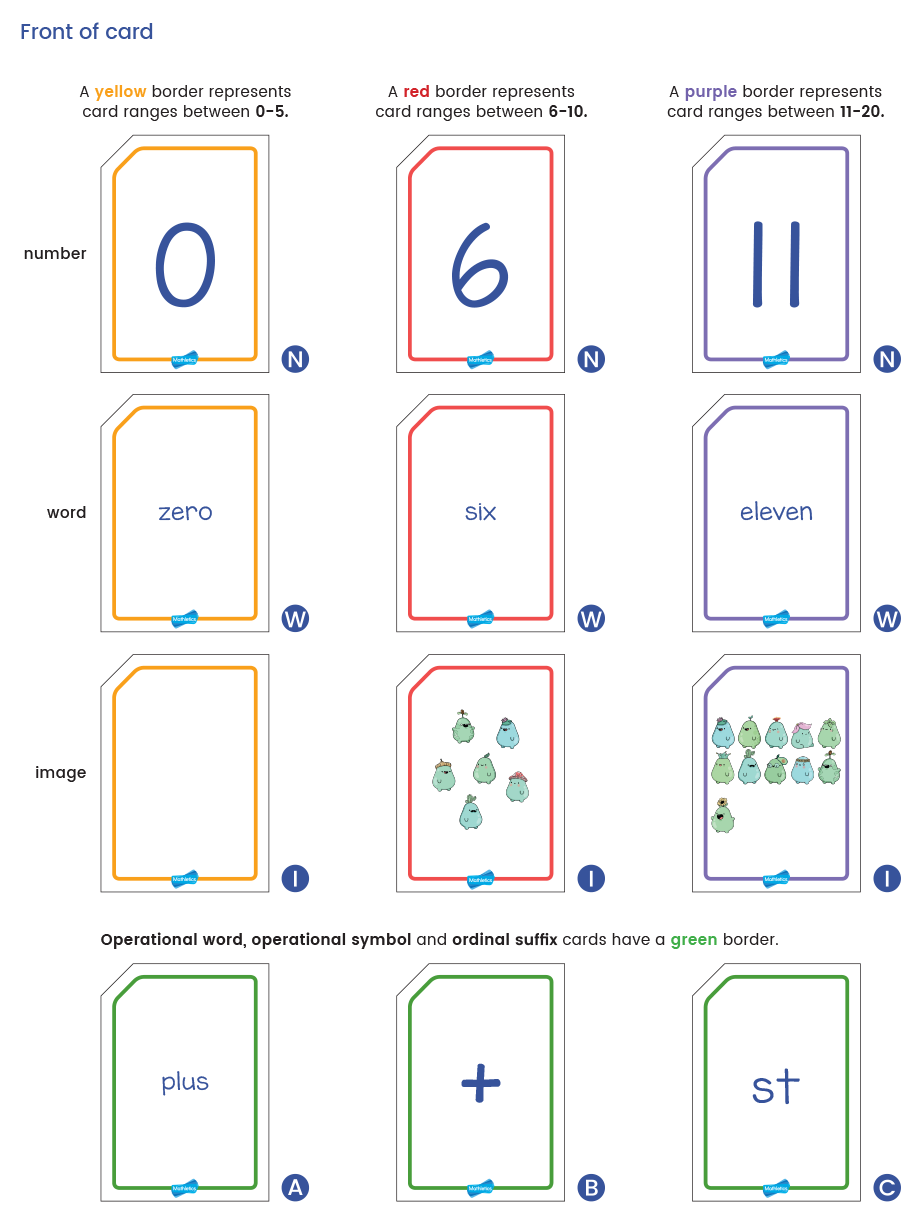Back to card games
Card games
More, less or the same
Strand NumberTopic Compare and order
- 1
- Prep < 5 mins

- Play 5-10 mins

 Pairs
Pairs

Summary
Students use cards to make sentences to compare numbers.
Curriculum content
- Compare numbers using ‘is more than’, ‘is less than’ or ‘is equal to’
- Read number words 1 to 10
- Write numbers 1 to 10
Materials
Card sets
- 1 set of Mathletics number cards 1 to 10
 1-10
1-10 - 1 set of Mathletics word cards 1 to 10
 1-10
1-10 - Mathletics operation word cards ‘is more than’, ‘is less than’ and ‘is equal to’
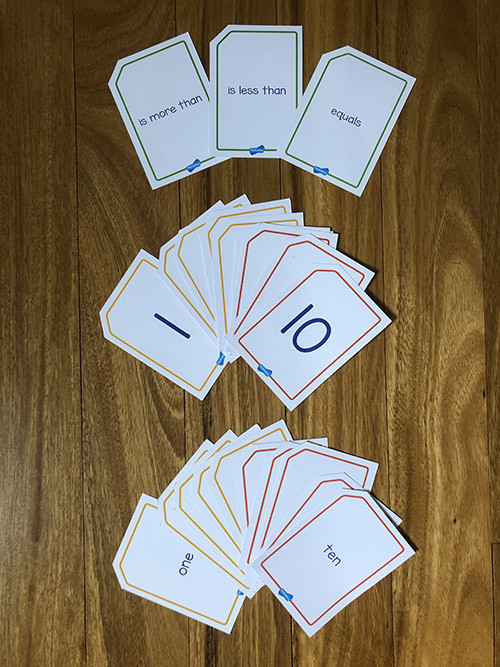
How to play
Set-up
- Arrange students into pairs side-by-side.
- Arrange the operation word cards face up one below the other.
- Shuffle or mix the number and word cards together. Place them in a pile face down above the operation word cards.
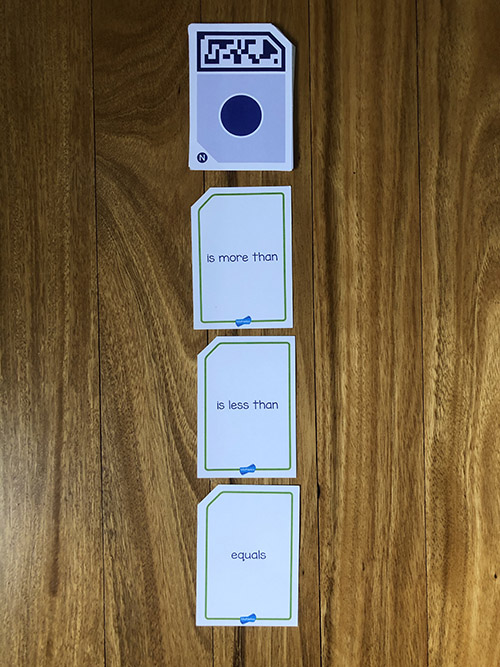
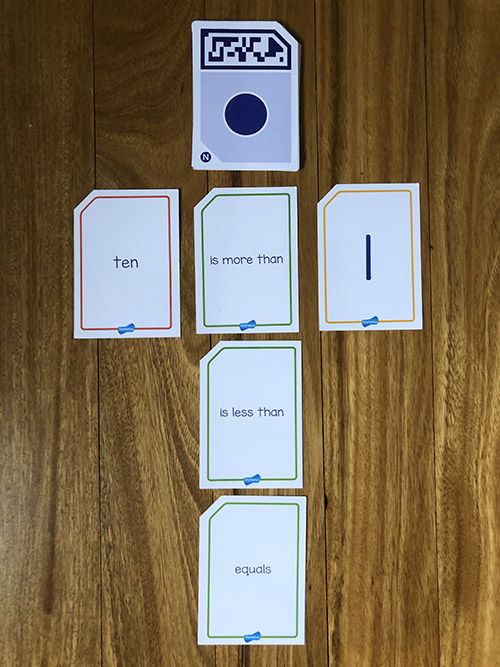
Rules
- Player 1 turns over a card from the number pile and places it either side of any operation word card.
- Player 2 turns over a card from the number pile and places it either side of any operation word card.
- Players who create a true sentence keeps both cards.
- Players take turns.
- A player can choose to move a card on their turn rather than pick up a card.
- The winner is the player with the most cards when all the number cards have been used.
Variations
CHANGE it down
- Use 2 sets of number cards rather than a mix of numerals and words.
CHANGE it up
- Ask students to record their comparison sentences.
- Use operation symbol cards instead of words.
- Use cards 10 to 20.
What to look for
- Can students read number words?
- Can students correctly compare 2 numbers?
- Do students notice that it is unlikely that they will win if they use the ‘is equal to’ card?
- Do students begin to notice that the magnitude of the number affects the probability of making a true sentence? For example, if a student turns over a 7, they should choose to place it before the ‘is more than’ card rather than the ‘is less than’ card.
